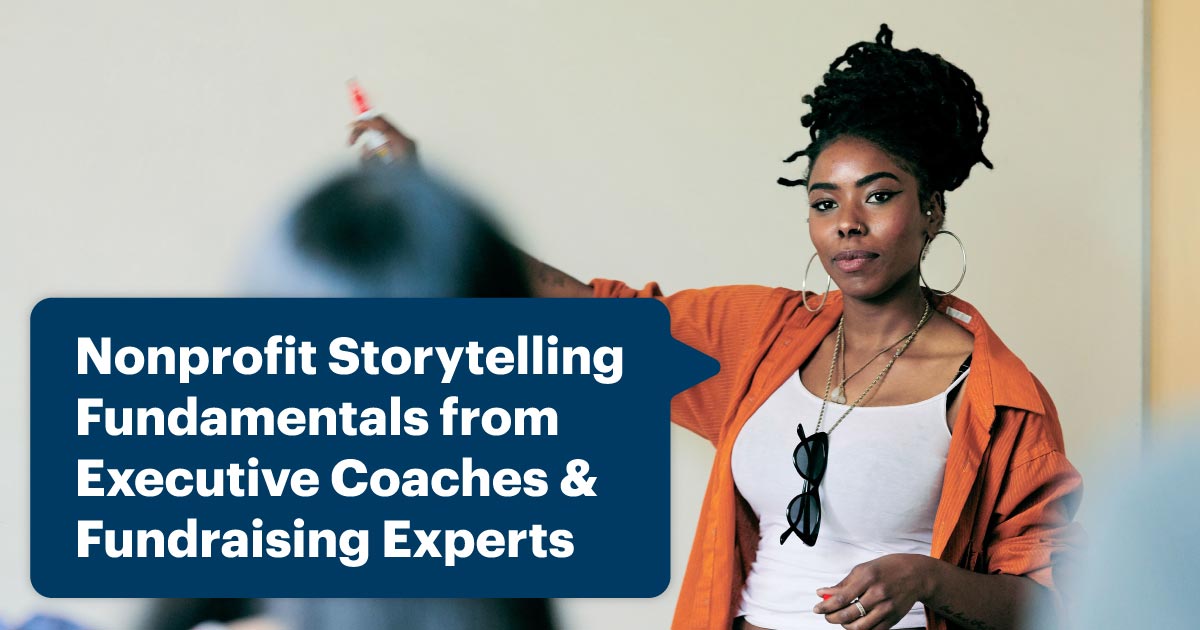
For our DonorPerfect Community Conference this year, we handpicked industry experts to lead virtual sessions on nonprofit storytelling techniques that promote fundraising growth and success. Even though the conference is over, there’s enough value in these sessions to influence your campaigns for years to come, and we want to share as much of our speakers’ knowledge as possible. Here are some of our highlights from Day 1!
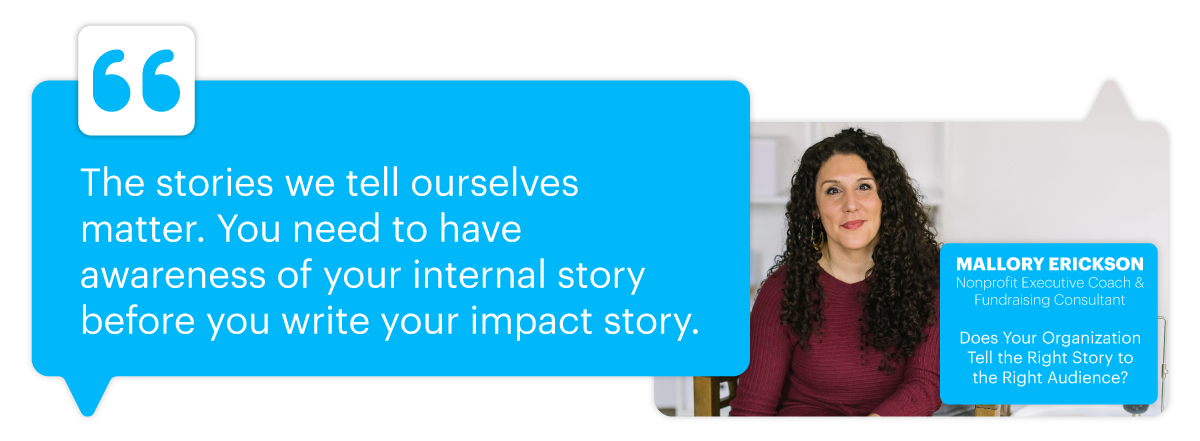
Mallory’s background: Mallory Erickson is the creator of the Power Partners Formula and host of the What the Fundraising podcast. She has trained 15,000 fundraisers (some 200 nonprofits a year) with her self-invented framework that combines the art and science of fundraising for a high conversion rate on donor outreach.
Mallory’s session started by asking who would consider themself an “accidental fundraiser.” In response, the live chat flooded with affirmation. In this industry, so many of us have suddenly moved up in the ranks of a nonprofit and had to keep up appearances that we know exactly what we’re doing and aren’t overwhelmed, she says. This causes nonprofit employees to switch organizations or leave the sector altogether.
The importance of self-awareness
Mallory says the secret to sustainable and reliable fundraising success is a method she calls magnetic storytelling, and in her presentation, she showed attendees how to captivate donors with words. This means looking inward to determine how you will show up for your donors and asking yourself about the energy or emotion behind what you’re doing. “Uncover the energy behind your actions by understanding the way you feel as a fundraiser, and the thoughts and beliefs you hold about people, money, and philanthropy,” she encourages.
The art of nonprofit storytelling
Just like we use Freytag’s Pyramid in literature, fundraisers can use Mallory’s content pillars in nonprofit storytelling to maximize impact, like setting, character development, core problem, and resolution. For example, the inciting incident in Mallory’s personal story was her realization that she needed a fundamental change to her fundraising methods or she needed to leave the sector.
The science of nonprofit storytelling
Mallory points out that great storytelling can actually change our brain chemistry. Cortisol is released in the brain when stressed, and oxytocin is released when stimulated. According to neuroscientist Paul Zak, the amount donors give has been linked to the amount of oxytocin released in their brains.
Watch Mallory’s session to learn the content pillars of magnetic storytelling
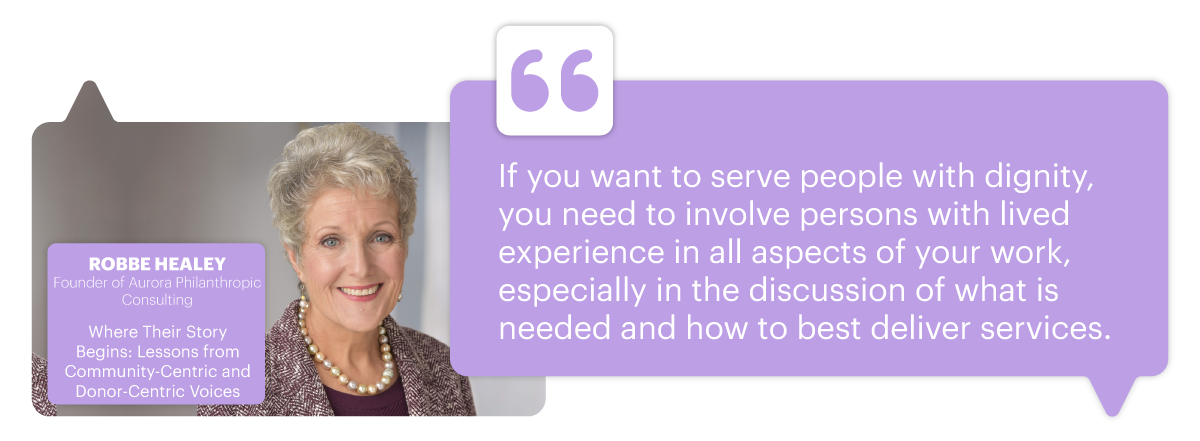
Robbe’s background: Robbe Healey, MBA, NHA, ACFRE, Founding Member of Aurora Philanthropic Consulting, has practiced philanthropic fundraising and non-profit organization management for more than 40 years. She is an accomplished fundraising generalist with a successful track record of establishing and strengthening development offices and boards.
Movements like Me Too and Black Lives Matter changed the energy and urgency of social justice. To lift up people with lived experiences – with a sense of urgency and ownership – it can be hard for fundraisers to know which advice to listen to and how to understand their mission’s role, Robbe explains in her keynote presentation. She asks, “What actions did social justice conversations prompt? Did you change or preserve the status quo? Did you begin to see any patterns or learn any lessons?”
She provides a few examples to consider for your mission:
- Were there any changes in your gift acceptance policies?
- Changes in donor recognition and naming practices?
- Have you refused or considered refusing certain gifts?
- Does your constituency think of wealth as a weapon, or a tool?
- Are they concerned about a concentration of wealth, or power?
Digesting fundraising advice from 1990-2020
Robbe notes that for the past three decades, the fundraising community has had two distinct “voices” or approaches: donor-centric and community-centric. Many fundraising consultants have recommended a shift to community-centric language – using words like “together” and “we” instead of putting ownership on the donor with “you” and “your” – and many fundraisers have misinterpreted donor-centric to mean donor-superior.
In her session, Robbe invites fundraisers to cut through all of this noise by considering what is best for their mission and those it serves, and determine if their mission is tied to a movement or urgent need. Because in 2022, successful nonprofit storytelling requires a genuine commitment to diversity, equity, and inclusion, which means involving persons with lived experience in your strategies and tactics, she argues.
The future is donor-forward
Robbe suggests that fundraisers can take the best of both approaches (donor-centric and community-centric) by building trust among their donors that they will address important issues promptly, and by putting people with lived experiences at the forefront of their decision-making about how to deliver their services.
According to Cygnus Research, to fulfill donors’ relationship requirements, nonprofits should:
- Provide prompt and meaningful acknowledgment whenever donors make a gift;
- Demonstrate how every gift they make, regardless of its value, is assigned to a program, project, or initiative narrower in scope than the mission as a whole;
- Report, in measurable terms, on what was accomplished with the last gift before being asked for another.
Move toward donor-forward fundraising with help from industry expert Robbe Healey
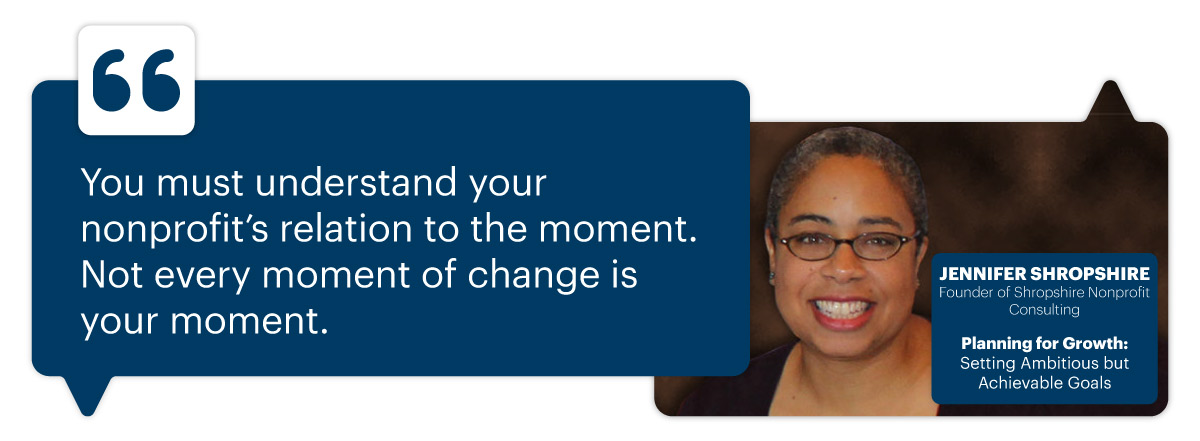
Jennifer’s background: Jennifer Shropshire specializes in nonprofit strategic planning, fundraising, and board development. Before starting her own practice, she was a Director of Development, a fundraising consultant with The Nonprofit Center at La Salle University, and a CLEAR Circle facilitator working with nonprofit executive directors.
The recent global impact on fundraising – brought on by the pandemic and social movements – has placed a high premium on acting quickly, speaking out, and being transparent. But you can’t be everything to everyone at once. Jennifer advises that in order to set ambitious but achievable goals, fundraisers must know how to anticipate challenges in their sector, know when and how to take action, and know when to pivot to a different approach.
“You must understand your nonprofit’s relation to the moment,” she explains. “Not every moment of change is your moment.”
DonorPerfect Marketing Manager, Sam Goldenberg, shared his favorite takeaway from the session: “Jennifer said ‘Fortune favors the prepared,’ and cited nonprofits that enacted a new plan during the COVID-19 pandemic. She said to think of all the possibilities that could affect your nonprofit, and don’t be afraid to act on them when it happens, because fortune favors the bold, too.”
Like Mallory Erickson, Jennifer also stressed the importance of a fundraiser’s own emotion and energy behind the stories they tell constituents in the moment of change.
She explains how stories telegraph or train donors:
- In shared celebration – Our community is stronger because X.
- In criticality – Now is the most important time to invest in X.
- In credibility – Our partners say they’ve chosen us because X.
- In clarity – Our focus is, or has always been, X.
- In positioning – This is the role we play in our ecosystem.
- And in shifts – This is what we’ve learned.
Learn how to anticipate challenges and plan for change with strategic goals and tactical initiatives
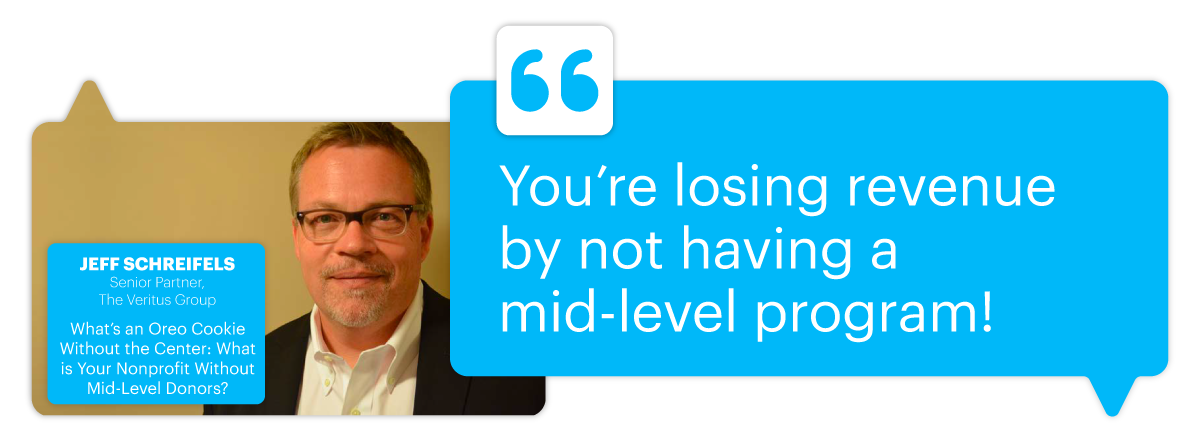
Jeff’s background: For more than 25 years, Jeff Schreifels has been developing, planning, and executing strategic fundraising and marketing programs. He has served as Development Director at several nonprofits and was Senior Strategy Director at The Domain Group, where he helped to develop record-setting fundraising programs for the agency’s largest clients in addition to serving the community in a variety of charities.
In his insightful session, Jeff recommends a data-driven, direct response, donor-centered approach to mid-level fundraising. He explains that industry-wide, donor retention is on a downward trend, and part of the explanation is that fundraisers are not paying enough attention to donor value attrition.
Donor Value Attrition
In short, Donor Value Attrition is a metric used to show that even though donors are being retained, their gift amounts are decreasing year over year. Jeff says that fundraisers should focus on these donors, specifically, to dramatically improve their overall retention.
Jeff argues that while nonprofits must report back to donors at all giving levels, treating a mid-level donor the same way you treat a $10 donor doesn’t serve them and hurts your pipeline. “Your mid-level donors are your most loyal and your future major donors,” he stresses. In fact, according to Veritus research, organizations without a mid-level program see about 0.2-1.2% of donors move to major gifts each year, and organizations with a robust mid-level program, see 3-3.5% move into major gifts.
To start a robust mid-level program, Jeff recommends donor tiering based on revenue from the current or previous year. These tiers are meant to be fluid and should be adjusted as you learn more about your donors. For example, Tier A might be where you spend the most time and send the most personal messages.








